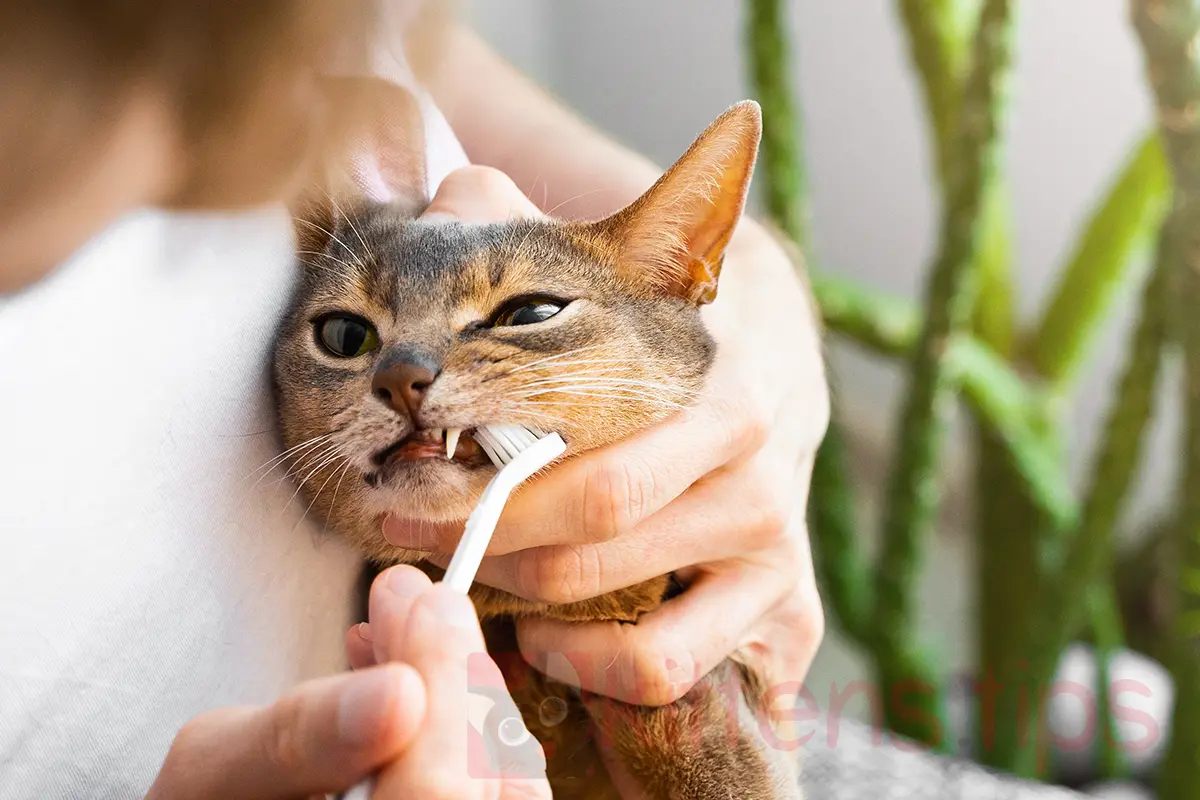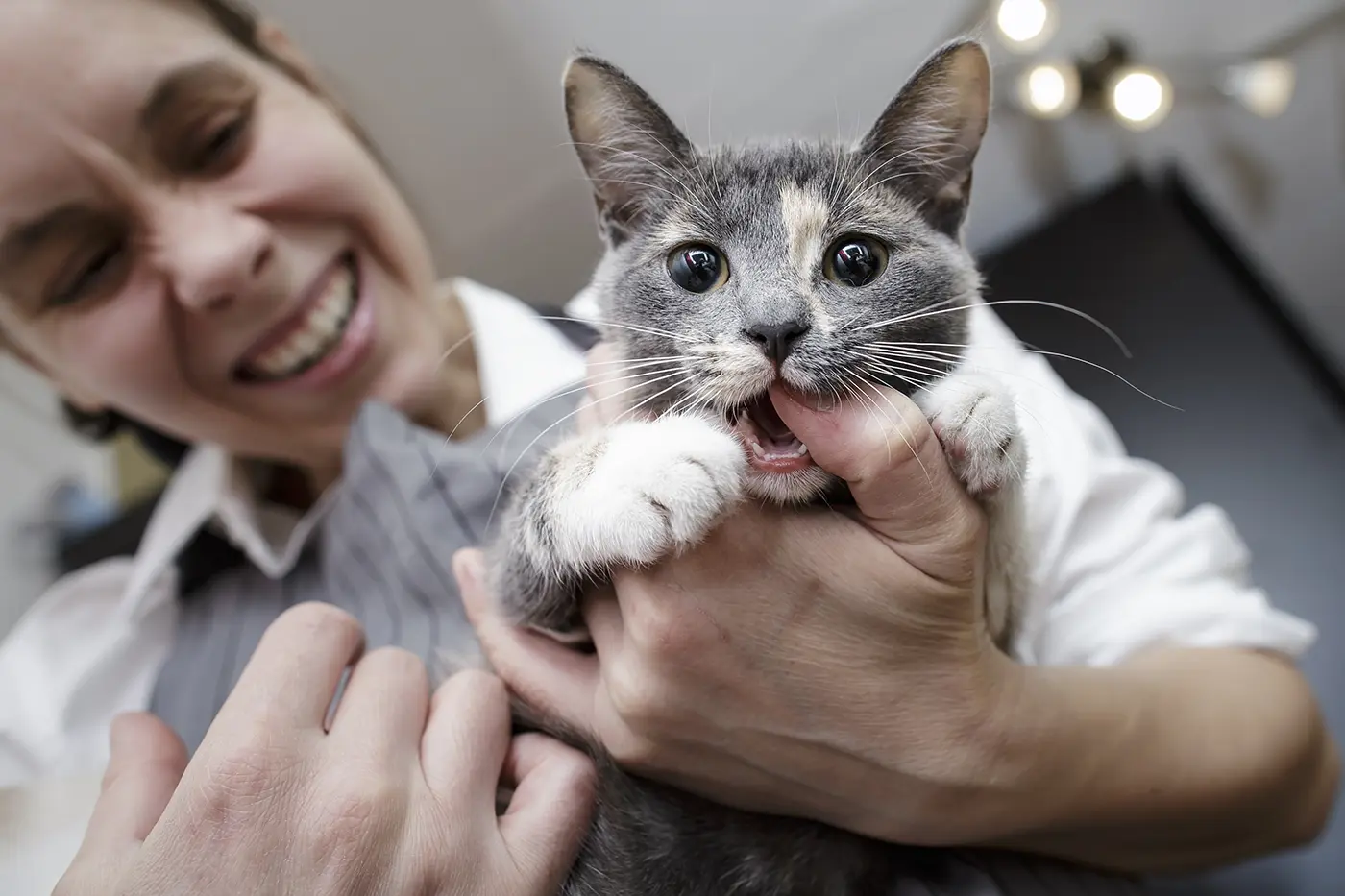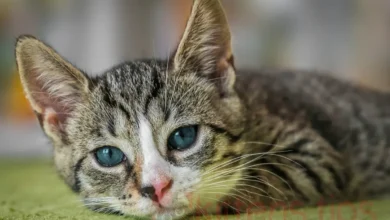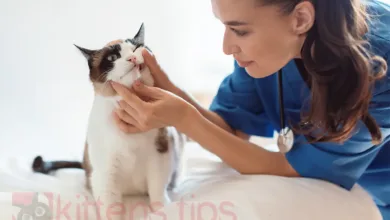
Dental Cleaning for Cats. When Is It Done and What Does It Involve?
Dental cleaning for cats is a lesser-known procedure, with very few cat owners opting for this dental treatment. Dental cleaning, the process of removing tartar and plaque, is necessary to prevent dental diseases and other oral health-related issues.
In several previous articles, we have discussed how crucial dental health is for cats and the health problems that can arise from poor oral hygiene. From simple conditions to more complicated ones such as feline periodontal disease, gingivitis, or stomatitis, dental hygiene can be the underlying cause.
Table of Contents
What is dental cleaning?
Commonly performed in humans, dental cleaning is a medical procedure used to remove tartar from the surface of teeth. Tartar is a mineralized accumulation of bacterial plaque that has deposited on teeth over time. These bacterial plaques consist of food debris, bacteria, and saliva. When these plaques are not removed through regular brushing, they can mineralize and form tartar, a hard and colorless substance that can accumulate especially around the gums.
Dental Cleaning for Cats. When Is It Done and What Does It Involve?
Similar to humans, dental cleaning for cats is a dental procedure that involves removing tartar and bacterial plaque from the animal’s teeth. As mentioned above, by eliminating tartar and bacterial plaque from a cat’s teeth, several conditions such as gingivitis or periodontitis can be prevented.
While dental cleaning is a straightforward procedure for humans done at the dentist’s office, it is a bit more complicated for cats. Dental cleaning for cats is usually performed under general anesthesia. The veterinarian will use a specialized instrument to remove tartar and bacterial plaque from the cat’s teeth. In some cases, the veterinarian may also use a laser to remove tartar.
Dental cleaning for cats is essential to prevent dental diseases such as gingivitis, periodontitis, and tooth loss. Gingivitis is an inflammation of the gums that can lead to gum recession and exposure of the tooth roots. Periodontitis is a more severe condition that can lead to the loss of alveolar bone, which supports the teeth. Tooth loss can ultimately lead to feeding problems and other health issues.
When is dental cleaning recommended for cats?
Normally, for good dental health, dental cleaning should be done at least every 12 months, but it is not suitable for all cats. Considering that the tartar removal process often involves general anesthesia for cats, it comes with significant risks. The veterinarian will assess the cat’s overall health to determine if it is eligible for anesthesia and dental cleaning.
Some cats may have pre-existing conditions that can affect the choice of anesthesia or the procedure itself.

How to prevent tartar buildup on a cat’s teeth?
Preventing tartar buildup on a cat’s teeth involves adopting a set of regular measures to maintain proper oral hygiene. Here are some tips to help prevent tartar accumulation in cats:
1. Proper diet and dry food.
A balanced diet and quality food can contribute to maintaining dental health. There is even special food for tartar control, which can help prevent bacterial plaque accumulation. Additionally, dry cat food may be more beneficial for tartar control than wet food, as chewing kibbles helps clean the teeth.
2. Dental hygiene gels or solutions.
There are special gels and solutions for dental hygiene in cats available at veterinary pharmacies and pet stores, which can be added to drinking water or applied directly to the teeth. The substances in these gels help prevent plaque and tartar formation.
3. Toothbrushing.
Learn to brush your cat’s teeth. Use a special pet toothbrush and cat toothpaste, which can be purchased from the veterinarian. Start gradually and make it a regular routine.
Related: Gingivitis in Cats: Causes, Symptoms, and Treatment
In conclusion, prioritizing dental cleaning for cats is pivotal for their overall well-being and longevity. By addressing tartar buildup and plaque through regular dental cleanings, cat owners can significantly mitigate the risk of various oral health issues such as gingivitis, periodontitis, and tooth loss. Moreover, embracing preventive measures like proper diet, dental hygiene gels, and toothbrushing routines can complement professional cleanings, ensuring that cats maintain optimal oral health throughout their lives. Therefore, proactive dental care, including dental cleaning for cats, stands as a cornerstone in promoting their health and enhancing their quality of life.


